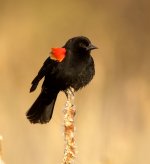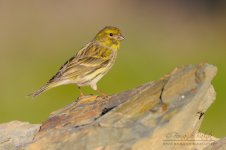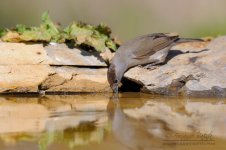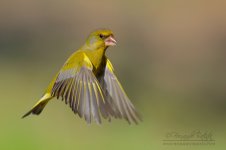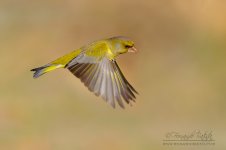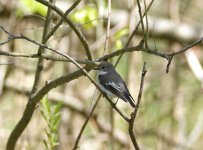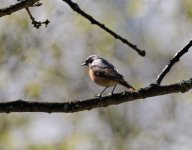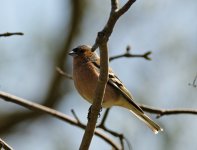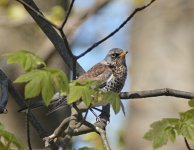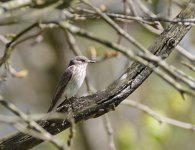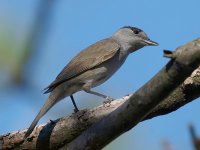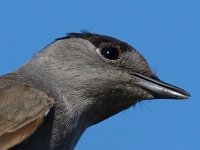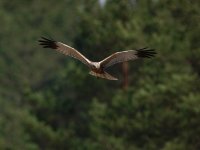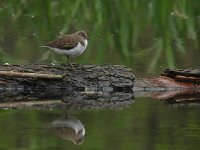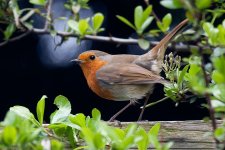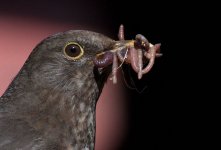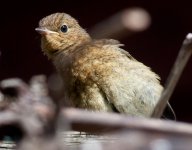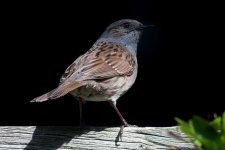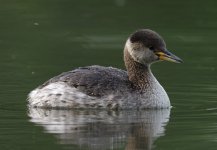-
Welcome to BirdForum, the internet's largest birding community with thousands of members from all over the world. The forums are dedicated to wild birds, birding, binoculars and equipment and all that goes with it.
Please register for an account to take part in the discussions in the forum, post your pictures in the gallery and more.
You are using an out of date browser. It may not display this or other websites correctly.
You should upgrade or use an alternative browser.
You should upgrade or use an alternative browser.
Astroscope + DSLR = Gallery! (2 Viewers)
- Thread starter cango
- Start date
More options
Who Replied?Hello~
I've been using an Astro-tech 72 ED with a Canon 500D for bird photos. You can see some of my attempts here:
http://www.flickr.com/photos/chrisbogert/sets/72157629302379715/
Not all of them are with the AT72ED, about 30 of the 60 are taken with it though. It tells in the description.
It is a superbly sharp lens.. probably can't see it as well with the down-sized net versions of the photos though.
I'll post a link to a photo of my setup in the setup section. Certainly is fun.
I've been using an Astro-tech 72 ED with a Canon 500D for bird photos. You can see some of my attempts here:
http://www.flickr.com/photos/chrisbogert/sets/72157629302379715/
Not all of them are with the AT72ED, about 30 of the 60 are taken with it though. It tells in the description.
It is a superbly sharp lens.. probably can't see it as well with the down-sized net versions of the photos though.
I'll post a link to a photo of my setup in the setup section. Certainly is fun.
bluedubius
Rick
Red-winged Blackbird
Nikon P6000
Celestron C80ED refractor (600mm f/7.5) with Baader 17mm eyepiece
distance around 60 feet
You did good with the blacks there. Beatiful!
bluedubius
Rick
He was in great light, Cango, that helped a lot. I'll have to say that I have now tried bird photography with three or four different spotting scopes and a Nikkor 400mm prime with a 2X crop camera (GH1) and point and shoots and DSLR's and I have yet to find anything that will give me the kind of image I can get with this old refractor and a DSLR (even with a 2X barlow or converter). Some of those others come pretty close, but probably at three or four times the cost. Sure am grateful I stumbled across this thread a couple of years ago!
FernandoBatista
Well-known member
Very nice work, Cango! The blackbird and the chaffinch are specially nice, they look very sharp.
FernandoBatista
Well-known member
Some photos from my TL APO.
Serin - 480mm, F/6, ISO400, 1/2000
Black Cap - 480mm, F/6, ISO400, 1/1600
Greenfinch 1 - 480mm, F/6, ISO800, 1/2000
Greenfinch 2 - 480mm, F/6, ISO800, 1/2500
Serin - 480mm, F/6, ISO400, 1/2000
Black Cap - 480mm, F/6, ISO400, 1/1600
Greenfinch 1 - 480mm, F/6, ISO800, 1/2000
Greenfinch 2 - 480mm, F/6, ISO800, 1/2500
Attachments
Paul Corfield
Well-known member
Nice photos Cango and as Fernando says, a couple of good sharp ones too.
Fernando, lovely photography and great lighting as always. Loved the intimate one of the Blackcap. Did you set anything up special for the flight shots to encourage the birds to a particular spot?
Cheers,
Paul.
Fernando, lovely photography and great lighting as always. Loved the intimate one of the Blackcap. Did you set anything up special for the flight shots to encourage the birds to a particular spot?
Cheers,
Paul.
FernandoBatista
Well-known member
Hi Paul,
Yes, all these were shot at spot with a wildlife pond and feeders, the greenfiches were flying from the perch to the feeders.
This has been my main project for the year, I'm arranging a property I have specially for song birds, I’ve a few feeding stations and a pond for now, also have some nest boxes and will add a few more features in the future.
Yes, all these were shot at spot with a wildlife pond and feeders, the greenfiches were flying from the perch to the feeders.
This has been my main project for the year, I'm arranging a property I have specially for song birds, I’ve a few feeding stations and a pond for now, also have some nest boxes and will add a few more features in the future.
Tord
Well-known member
Hi all,
I mounted my newly acquired setup and went out to a local wood patch to put it to the test. Even though the brand new scope has quite a lot of fibers/speckles on the inside of the front lens (*), which I believe cause some loss of contrast the results are quite pleasant.
Camera: I used my spare camera Olympus E520 and fitted a 1.4 TC for extra magnification, meaning 840mm.
I share with you my first modest contribution to this gallery, for you to review and criticise.
B/W flycatcher: 400 ISO, 1/320s, 40% crop. I think this one is good, pity I could not come closer.
Redstart: 400 ISO, 1/400s, 50% crop. Slight OOF.
Chaffinch: 400 ISO, 1/250s, 90% crop. I think this one is good.
Fieldfare: 400 ISO, 1/200s, 75% crop. Slight shake blur, otherwise OK.
Grey Flycatcher: ISO 800, 1/400S, 40% crop. I think this one is quite good, pity I could not come closer.
Kind Regards
Tord
(*) I reported to the retailer Teleskop Service who immediately offered a replacement scope.
I mounted my newly acquired setup and went out to a local wood patch to put it to the test. Even though the brand new scope has quite a lot of fibers/speckles on the inside of the front lens (*), which I believe cause some loss of contrast the results are quite pleasant.
Camera: I used my spare camera Olympus E520 and fitted a 1.4 TC for extra magnification, meaning 840mm.
I share with you my first modest contribution to this gallery, for you to review and criticise.
B/W flycatcher: 400 ISO, 1/320s, 40% crop. I think this one is good, pity I could not come closer.
Redstart: 400 ISO, 1/400s, 50% crop. Slight OOF.
Chaffinch: 400 ISO, 1/250s, 90% crop. I think this one is good.
Fieldfare: 400 ISO, 1/200s, 75% crop. Slight shake blur, otherwise OK.
Grey Flycatcher: ISO 800, 1/400S, 40% crop. I think this one is quite good, pity I could not come closer.
Kind Regards
Tord
(*) I reported to the retailer Teleskop Service who immediately offered a replacement scope.
Attachments
Last edited:
Blackcap from my garden
SW 80ED + E 520
ISO=400 , 1/1000 s, handheld.
In my opinion time 1/800 s and above is enough for most situation in full light ( handheld) when object is not moving fast. Even at 1/250s with IS on I can get sharp images handheld.
Marsh Harrier
ISO=400 1/1250, tripod ( very sturdy Benro A4580F with gimbal head Triopo DG-3, total weight 4,5 kg ). Not very pleasant setup for long walks.
Common Sandpiper
SW 80ED + TC 2x + distance ring 8 mm- focal length 1300mm , 1/125, ISO=800 ( day was cloudy, almost raining), tripod, MLU 10 s.
SW 80ED + E 520
ISO=400 , 1/1000 s, handheld.
In my opinion time 1/800 s and above is enough for most situation in full light ( handheld) when object is not moving fast. Even at 1/250s with IS on I can get sharp images handheld.
Marsh Harrier
ISO=400 1/1250, tripod ( very sturdy Benro A4580F with gimbal head Triopo DG-3, total weight 4,5 kg ). Not very pleasant setup for long walks.
Common Sandpiper
SW 80ED + TC 2x + distance ring 8 mm- focal length 1300mm , 1/125, ISO=800 ( day was cloudy, almost raining), tripod, MLU 10 s.
Attachments
Paul Corfield
Well-known member
Tord
Well-known member
Super shots, with the Marsh Harrier standing out.Blackcap from my garden
SW 80ED + E 520
ISO=400 , 1/1000 s, handheld.
In my opinion time 1/800 s and above is enough for most situation in full light ( handheld) when object is not moving fast. Even at 1/250s with IS on I can get sharp images handheld.
Marsh Harrier
ISO=400 1/1250, tripod ( very sturdy Benro A4580F with gimbal head Triopo DG-3, total weight 4,5 kg ). Not very pleasant setup for long walks.
Common Sandpiper
SW 80ED + TC 2x + distance ring 8 mm- focal length 1300mm , 1/125, ISO=800 ( day was cloudy, almost raining), tripod, MLU 10 s.
/Tord
Paul Corfield
Well-known member
Paul Corfield
Well-known member
Couple of images from today. Shame about the twigs in front of the juvenile Robin. The Robin was leaning right over to expose as much body to the sun as it could.
The Dunnocks head was in partial shade which made for interesting lighting.
Both are taken with Canon 450D - 600mm Skywatcher Pro 80ED - 1.5X teleconverter made from Sunagor 100-200mm lens. Range 10m (33 feet).
Paul.
The Dunnocks head was in partial shade which made for interesting lighting.
Both are taken with Canon 450D - 600mm Skywatcher Pro 80ED - 1.5X teleconverter made from Sunagor 100-200mm lens. Range 10m (33 feet).
Paul.
Attachments
Tord
Well-known member
Hi All,
Today my Skywatcher ED80 was returned to me from Teleskop Service. They fixed the issue with loose paint inside the tube and cleaned the front lenses, now the scope looks OK. (By the way TS have been very nice to deal with, I wish all retailers had the same level of customer service. 100% satisfied.)
When mounting it on the tripod I realized that by flipping the rail perfect balance could be achieved in spite of extending the extension tube from 50 to 80 mm.
I could not resist the temptation to test the performance. Although light was not that great, I believe the attached picture of a juvenile Red-necked Grebe demonstrates the scope has potential to deliver high quality pictures.
It's going to rain the coming week(s), hopefully I will have more updates to share with you after that.
E620, ISO 400, 1/250 s
Today my Skywatcher ED80 was returned to me from Teleskop Service. They fixed the issue with loose paint inside the tube and cleaned the front lenses, now the scope looks OK. (By the way TS have been very nice to deal with, I wish all retailers had the same level of customer service. 100% satisfied.)
When mounting it on the tripod I realized that by flipping the rail perfect balance could be achieved in spite of extending the extension tube from 50 to 80 mm.
I could not resist the temptation to test the performance. Although light was not that great, I believe the attached picture of a juvenile Red-necked Grebe demonstrates the scope has potential to deliver high quality pictures.
It's going to rain the coming week(s), hopefully I will have more updates to share with you after that.
E620, ISO 400, 1/250 s
Attachments
Paul Corfield
Well-known member
Nice photo Tord.
It's probably worth learning how to clean the scope internally as it's something you might need to do maybe once or twice per year. The front lens cell screws on as one complete unit and can be unscrewed for cleaning the glass on the reverse side. On the first go it can be a little tight to undo but once you do it then it becomes easier the next time.
Paul.
It's probably worth learning how to clean the scope internally as it's something you might need to do maybe once or twice per year. The front lens cell screws on as one complete unit and can be unscrewed for cleaning the glass on the reverse side. On the first go it can be a little tight to undo but once you do it then it becomes easier the next time.
Paul.
Tord
Well-known member
Thanks Paul,
I have never dismounted any optical device so far, however reading through your posts it seems you know what you are talking about. Even though there are no moving parts, what is the risk associated? E.g. failing in placing the lenses back with the precision required to preserve the alignment.
/Tord
I have never dismounted any optical device so far, however reading through your posts it seems you know what you are talking about. Even though there are no moving parts, what is the risk associated? E.g. failing in placing the lenses back with the precision required to preserve the alignment.
/Tord
Paul Corfield
Well-known member
The whole lens housing is a complete unit so there's no danger of misalignment. All the glass is held inside the housing by their own retaining ring and that part isn't touched. The housing is just unscrewed, clean the back of the rear glass element if it gets dusty and then screw the housing back on till it is tight. It's quite a large thread so there's no danger of cross threading either. Alignment with doublet lens systems like the ED80 is rarely an issue and this is why there's no separate adjustment screws. With refractors it's only with triplet apo lenses where you will get the adjusment screws.
Paul.
Paul.
Similar threads
- Replies
- 34
- Views
- 2K
- Replies
- 0
- Views
- 737
Users who are viewing this thread
Total: 3 (members: 0, guests: 3)




